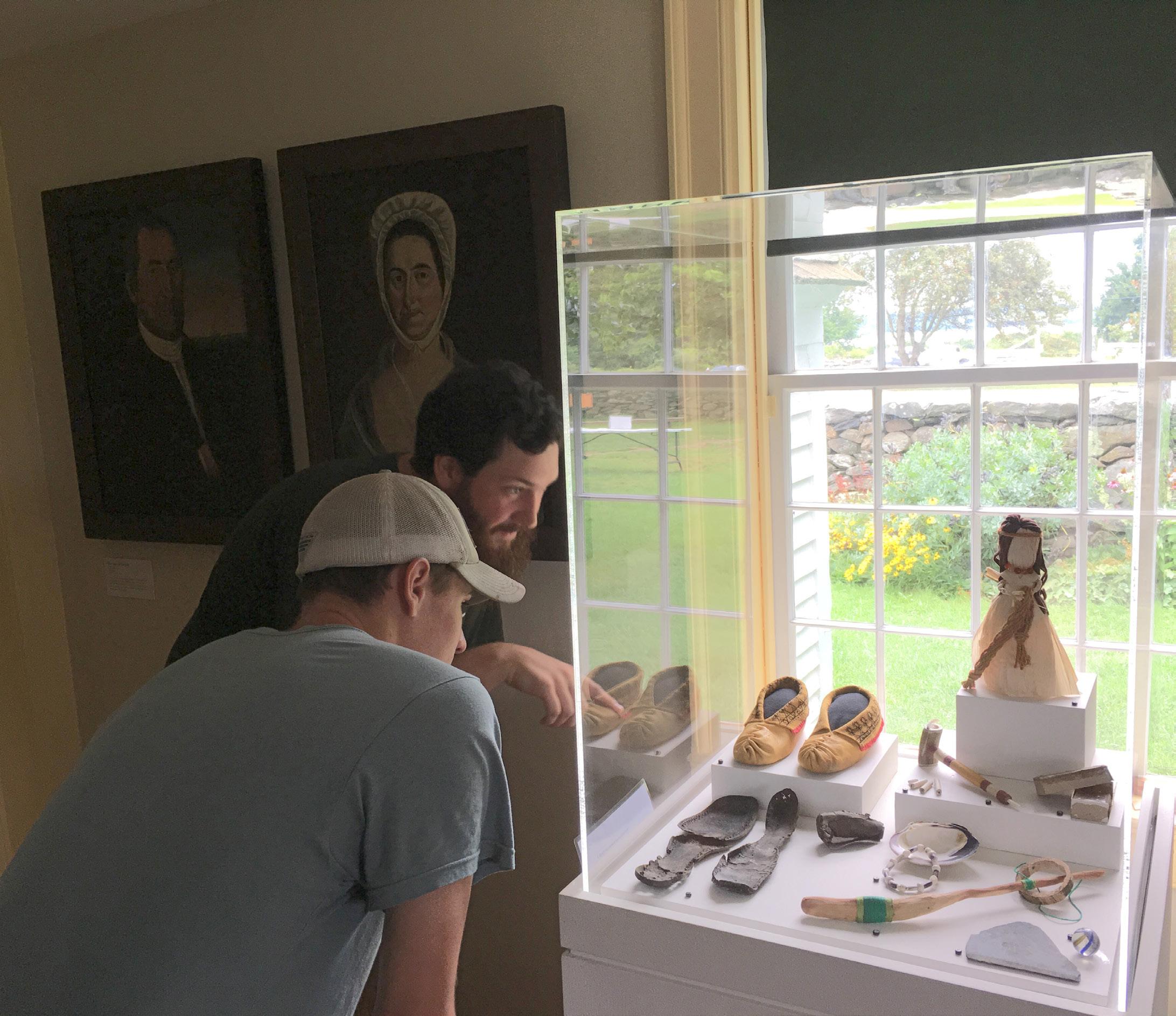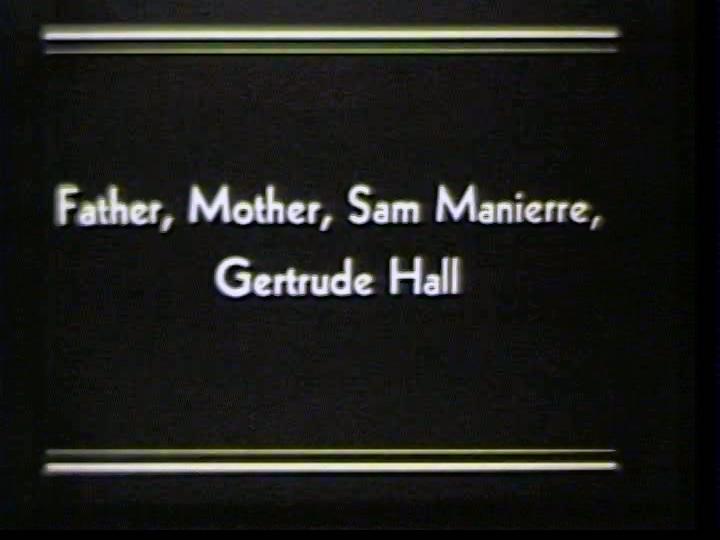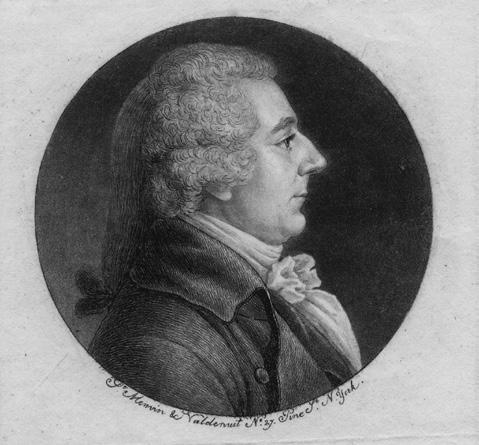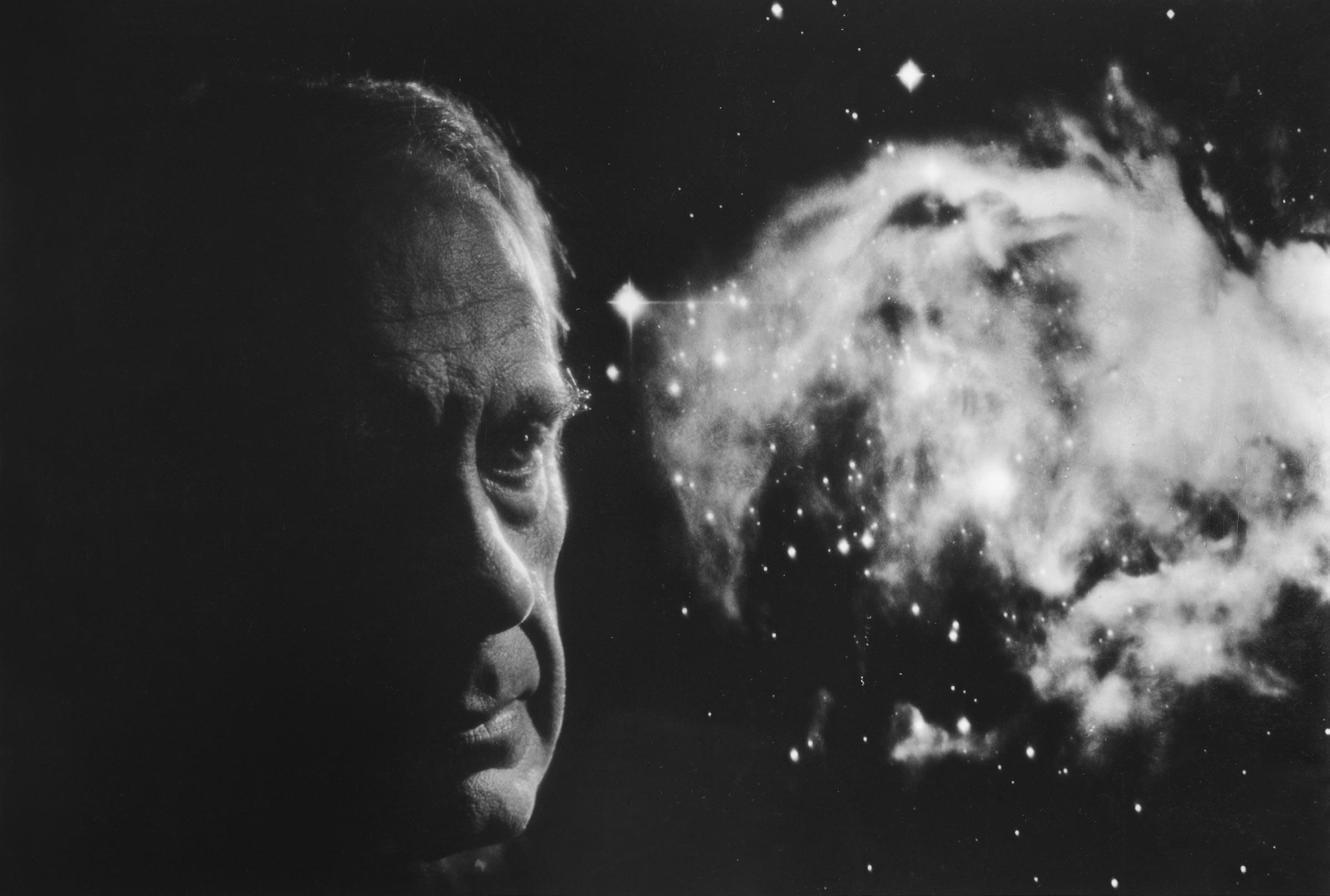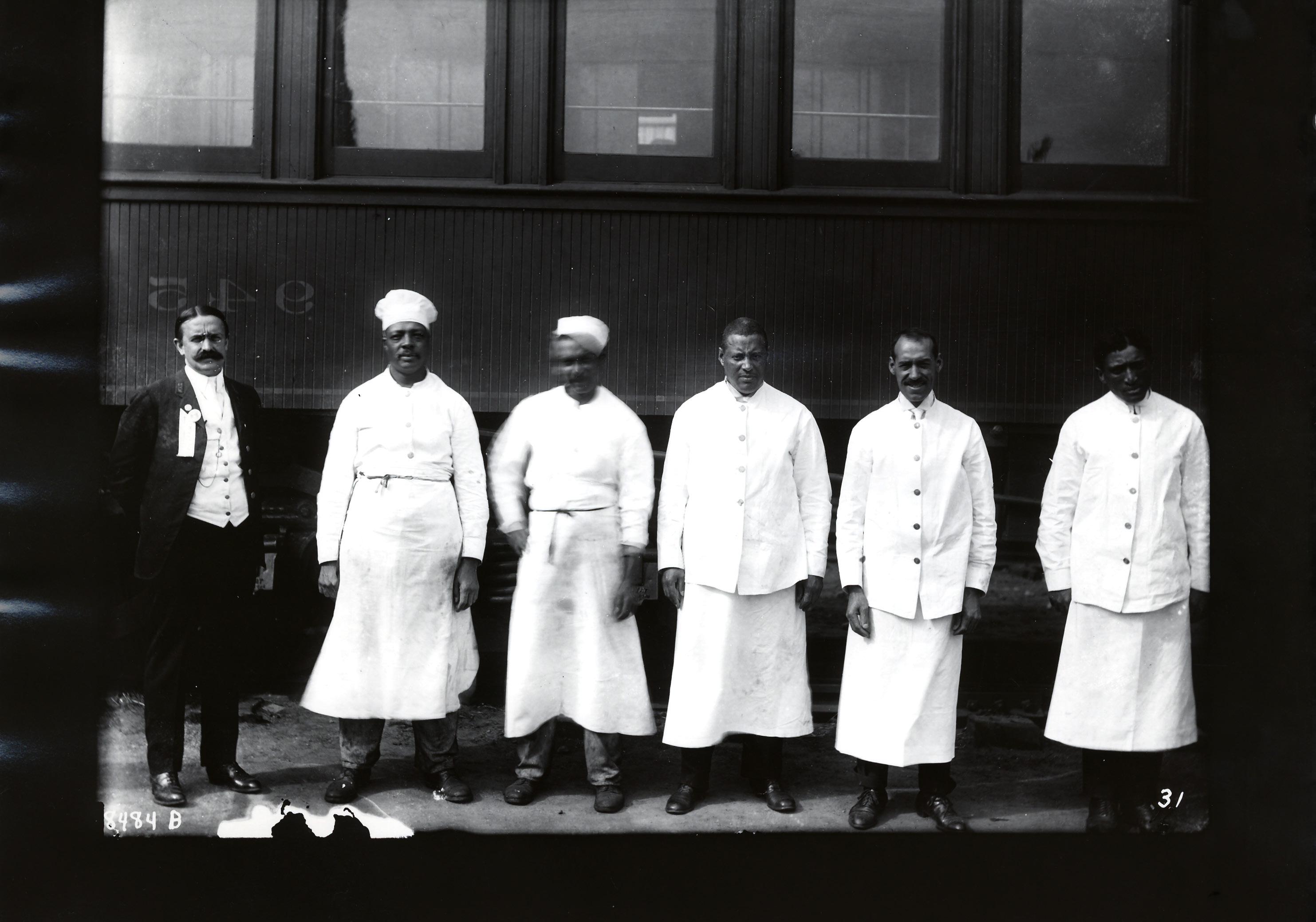
6 minute read
Stories, Not Stuff
Food service workers posed in front of a car of the Boston and Albany Railroad in Milford, Massachusetts, c. 1910.
STORIES, NOT STUFF Collecting a Diverse New England
by SARA R. DEAN The recipient of three academic awards, Sara R. Dean holds a master’s in public history from Northeastern University and a bachelor’s in history and social sciences from Eastern Connecticut State University. Besides her work at Historic New England, she has conducted research on African American history for Old South Meeting House and the Bostonian Society. Sara is currently working as department coordinator for Academic Affairs at Berklee College of Music in Boston.
Can objects speak for themselves? If so, what do they tell us about the past and what do they leave unsaid?
I found myself asking those questions in the summer of 2018 when, as Historic New England’s community engagement intern, I conducted research with the organization’s archival materials and collections objects. Historic New England seeks to build relationships with local communities and invites them into the work of the organization through partnerships and collaborations. I discovered that this work is closely tied to Historic New England’s collecting practices and to its mission to engage diverse audiences.
Diversity has always been a fact of life in New England, and today New Englanders from diverse backgrounds are eager to learn about this history. During my time working with the archival material and objects in the collection, I found that some objects offered tantalizing glimpses into their subjects’ lives while others produced
more questions than answers. I wondered how Historic New England was addressing this challenge in order to present a clearer picture of a diverse New England.
Traditionally, narratives about New England’s history have privileged certain groups—usually wealthy, white, and male—and excluded others. This poses a problem for organizations with older collections, a concern that Historic New England has discussed on its blog (historicnewengland. org/archival-collection-revealsafrican-american-stories). Historic New England possesses a large
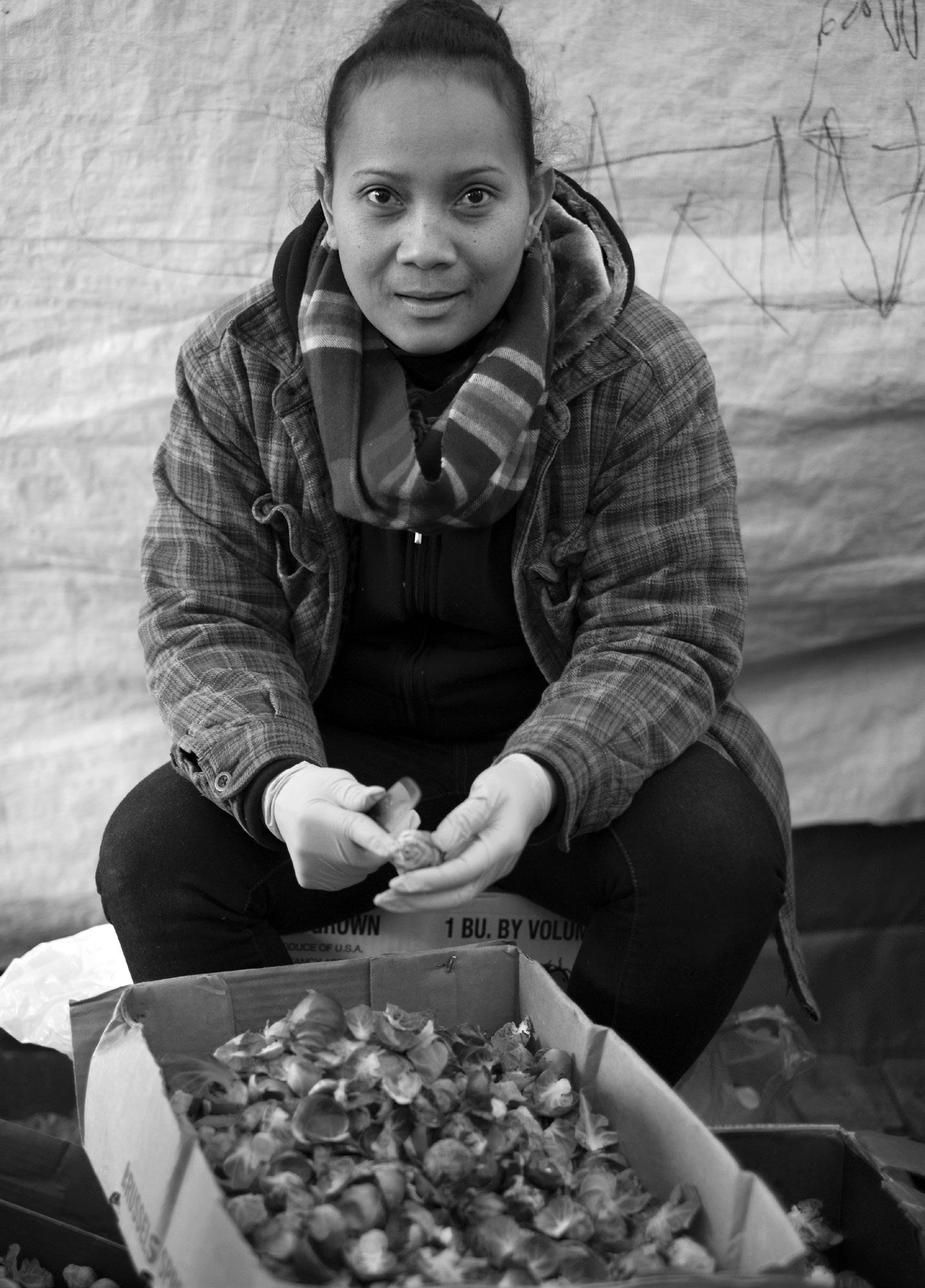
collection of nineteenth- and early twentieth-century material featuring African Americans. Much of this material was acquired as long as a century ago when few collectors were interested in preserving African Americans' stories. As a result, many of the people in these materials are unidentified, and we know little about them. I encountered this problem while flipping through the pages of the Boston African Americana Project binder in Historic New England’s Library and Archives, located at Otis House in Boston. Although the project (a collaboration with the Boston Athenaeum, the Bostonian Society, and the Massachusetts Historical Society) contains a multitude of photographs of African Americans in the Greater Boston area, little information is recorded besides the place and date the photographs were taken. Occasionally, the occupation of a photographed person is listed. Many of the images show African Americans engaged in service or domestic work, which sends a message about the biases that photographers and collectors may have had. These old collections teach us that objects have their limitations, and that we should take care to preserve the stories behind them rather than simply accumulate “stuff.” They also remind us that while people from diverse backgrounds have always been present in New England, they have not always been able to share their stories.
For instance, the c. 1910 photograph (page 1) of the Boston and Albany Railroad food service workers raises a number of questions. It shows five African American men and a white man lined up in front of a rail car in Milford, Massachusetts. Who are these men? How did they come to work on the railroad and what were their career prospects? How did they maintain ties to their families and communities while traveling? We may not be able to answer these questions, but this kind of information is vital to our understanding of everyday life and experience in New England.
At Historic New England, these outdated professional practices have given way to a philosophy that values inclusion and diversity and holds the people and stories behind the objects to be just
page 2 Alyssa “Sina” Chhim, a vendor at Haymarket in Boston, came to the United States from Cambodia when she was two years old. She is featured in Haymarket, the Soul of the City, one of the projects in Historic New England’s Everyone’s History documentary film series. right Fermin De la Cruz Santana, shown with his grandchildren, shared his story in another Everyone’s History project called We Are Haverhill: Changing Faces of Haverhill’s Neighborhoods. He is originally from the Dominican Republic.
as important as the objects themselves. In 2010, Historic New England launched an oral history series now known as Everyone’s History, which it produces in collaboration with community partners. The documentaries and other projects in the series contribute photographs, audio recordings, and video footage to Historic New England’s archives, but the organization’s priority is to collect and share stories.
For example, in 2013, Historic New England, the Haymarket Pushcart Association in Boston, and photographer Justin H. Goodstein developed the Haymarket Project. That endeavor yielded a YouTube documentary, an exhibition, a walking tour, and a book in the Images of America Series titled Haymarket. Over the course of four seasons, vendors at the historic open-air market tell stories about their work and lives in Boston. For many of them, ethnic diversity at Haymarket is a major talking point. Today, Haymarket is a place where people from East and South Asia, Africa, Central America, the Middle East, and elsewhere can meet and interact with one another.
Historic New England produced another project in 2018 called We Are Haverhill: Changing Faces of Haverhill’s Neighborhoods. It pairs oral history interviews of ten Haverhill, Massachusetts, residents with photographs by Markham Starr. Interviewees reflect on their heritage and upbringing, as well as on the city’s changing demographics. In the twentieth century, Haverhill was home primarily to Irish, Italian, and Polish immigrant families. Today, a prominent Latinx population from the Dominican Republic and Puerto Rico lives in the city as well. Goodstein’s and Starr’s photographs are beautiful and evocative, but it is through the oral histories that we can hear people’s voices, literally and figuratively.
Many of the interviewees see themselves as part of a diversifying and changing New England. The Everyone's History projects help to support this powerful insight.
Community-focused initiatives like Everyone’s History allow Historic New England to address the subject of diversity on more authentic and collaborative terms. As we have learned from past collecting practices, objects can

only tell us so much on their own. If they are not collected responsibly, they may not reflect the stories of the people they are supposed to represent. Collecting stories with the same care as objects allows us to more faithfully portray the diversity of life and experience that exists in New England. Work remains to be done with earlier acquisitions and Historic New England is continuing to investigate these. For example, staff members have compiled a resource on African American history with records from historical newspapers, slave trade voyages, Historic New England properties, and more. And although the blog post on African American collections acknowledges the challenges involved in this work, it also shows the progress that staff members are making.
Projects like these allow us to improve upon past efforts while working toward a more productive future. What can Historic New England uncover about the region’s diverse past through its work with diverse communities today?


